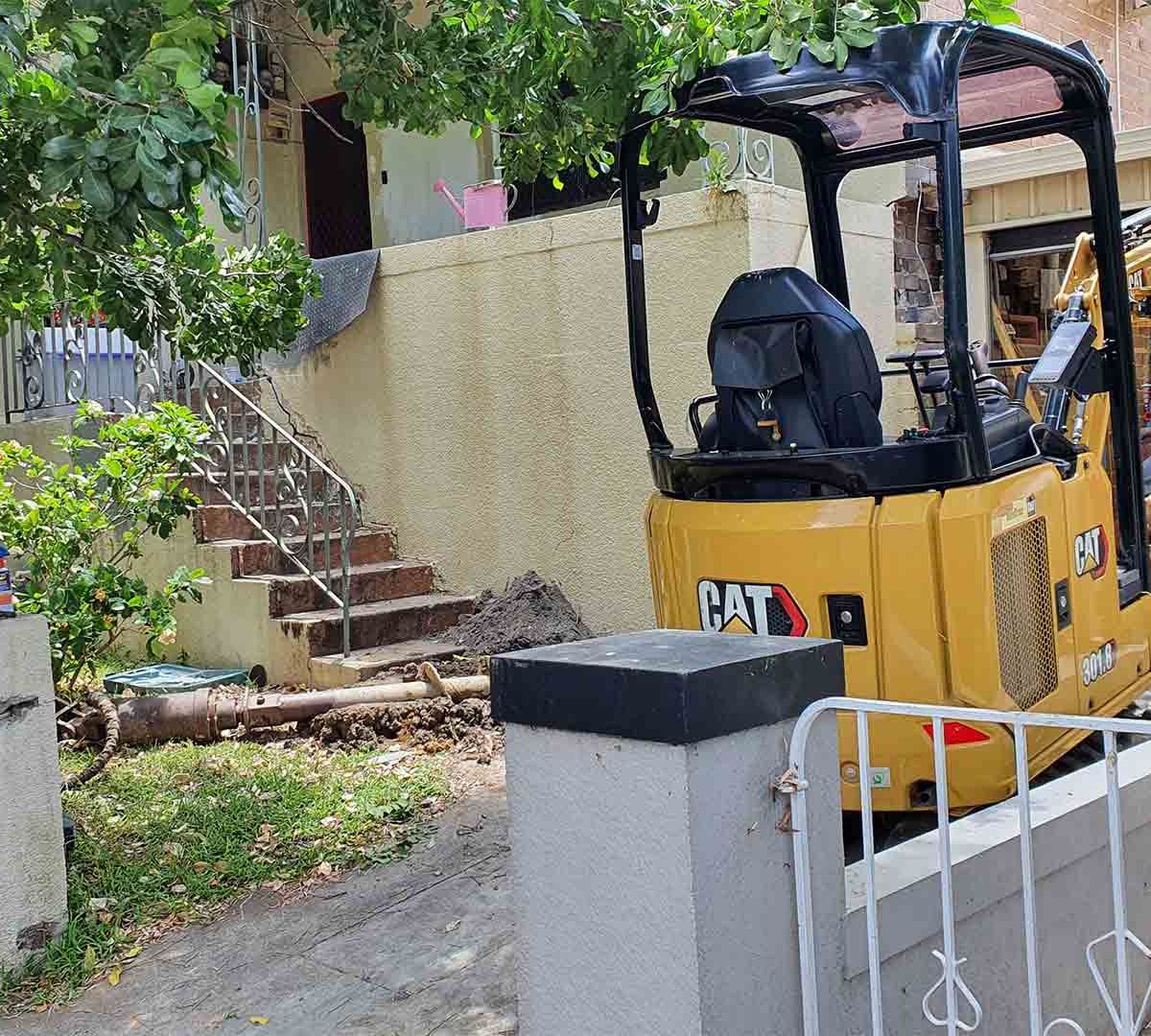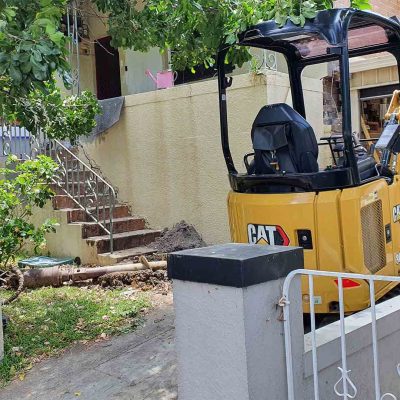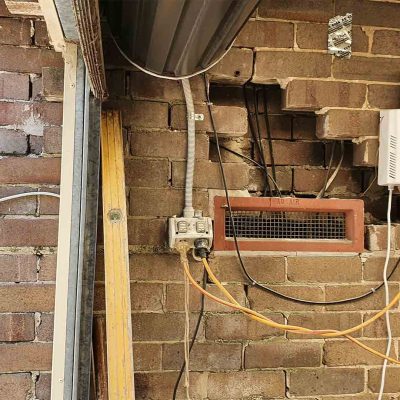Owning a house means you have a big job of taking care of your property. One way to do this is by building a retaining wall. A retaining wall not only looks nice but also helps keep your property safe from things like floods, landslides, and erosion. Deciding if you need a retaining wall can be hard because it depends on many things. Here, we will explore the factors that help determine if a retaining wall is necessary for your property:
Identify Soil Erosion
The shape of your land is crucial in deciding if you should have a retaining wall. If your land is very steep or often loses soil, a retaining wall can stop the soil from washing away when it rains a lot or you water the plants too much. Are you in a place where you need to control the soil moving downhill, or do you want to stop soil from washing away? If yes, then you might need a retaining wall. Retaining walls work like a barrier, holding the soil in place and stopping it from sliding down. Look at how your land naturally slopes and check for signs of soil erosion, like roots showing or the ground being uneven. If you see these problems, it might be a good idea to think about getting a retaining wall in Sydney.
Assess Water Drainage: Managing Rainwater Runoff
Big rainstorms can be a problem because water might get into your basement and wear away your house’s foundation. But if you have a good retaining wall, you don’t have to worry much about water running off. The wall makes the water flow around your house and into the drainage system. It also makes your property stronger by stopping water from wearing it away. If you see water gathering around your property, especially after a big rain, that’s a warning sign. Retaining walls in Sydney can be made with good drainage systems to move the water away, keeping the soil from getting too wet and causing damage. Watch out for signs like mudslides or the ground being uneven because of water running off.
Soil Composition
Knowing what your soil is made of is really important to figure out if you need a retaining wall. Some soils, like loose or sandy ones, are more likely to wash away. If your land has had problems with the soil not being stable, a retaining wall can help make it steady. But if your soil is clayey, it might keep too much water, causing drainage issues. A retaining wall with good drainage solutions can help fix these problems linked to different soil types.
Consider Structural Integrity: Mitigating the Risk of Landslides
If your property has multiple levels or varying elevations, a retaining wall can provide essential structural support. It helps distribute the weight of the soil, preventing slope failure and potential landslides. This is particularly crucial for homes situated on hillsides or properties with uneven terrain. If your land is in danger of landslides or the soil moving, a retaining wall can make the soil stable and stop possible disasters.
Concerns About Your Building’s Foundation
If you don’t have a retaining wall, your land might face erosion, and that’s something you want to avoid. Erosion can harm your foundation because it affects both the topsoil and the soil deep below. The stability of your property might be in danger because of the spaces created by erosion. Moreover, these spaces can let water in, creating more problems for your foundation.
Think About Functional Use: Levelling the Ground
Think about what you want to do with your land. If your land has different levels, a retaining wall can be a good way to make flat spaces for different activities. Concrete retaining walls can change a slope into flat areas, giving you places for gardening, sitting, or having fun outside. A retaining wall makes your land flat in several steps, which is helpful, especially if your house is on top of a hill. If your land is not flat and goes up or down, a retaining wall could be a good thing to invest in. It might also give you extra flat space for building or making your land look nice.
Aesthetic Enhancement
Not only do retaining walls help with important things, but they can also make your property look better. If you want to make your land look more elegant with landscaping, a well-designed retaining wall can be both useful and pretty. Retaining walls can be like decorations for your land, making it more beautiful and interesting. They can be used to create raised beds or borders for gardens, adding beauty and shape to your property. You can use a retaining wall to divide your backyard in a creative way. There are different design options for retaining walls, like ones made of wood, natural stone, or concrete, so you can pick the one you like best.
Structural Concerns
Watch out for any structural problems around your property. Cracks in the foundation, fences leaning to the side, or trees tilting might mean the soil is moving. Even if these issues don’t mean you absolutely need a retaining wall, they show that it’s important to make the soil steady. In these situations, it’s a good idea to talk to a structural engineer or reputed retaining wall contractors to figure out if a retaining wall is a good solution.
Your Property is in a Flood-Prone Area
If there’s a chance that your land might get flooded, it’s crucial to install a retaining wall. These walls play a key role in protecting your yard from flooding by utilising drainage stones that prevent water buildup and ensure proper flow.
Examine Potential Property Damage
Consider the proximity of your property to neighbouring structures or public spaces. If soil movement on your land has the potential to impact adjacent properties, it’s not only a matter of your property’s well-being but also one of social responsibility. Installing a retaining wall can mitigate the risk of causing damage to neighbouring areas.
Increasing Property Value
If you’re thinking about selling your property later on, putting up a concrete retaining wall can make it worth more. People who own homes usually like having a safe and comfortable place where they don’t have to stress about things like erosion, earthquakes, or floods.
Some Final Thoughts
Determining the need for a retaining wall involves a thoughtful evaluation of your property’s topography, drainage, functionality, soil composition, structural integrity, and aesthetic goals. It’s a choice that needs a good mix of being practical and looking nice. If you’re dealing with problems like soil washing away, water not going where it should, or your land being uneven, a retaining wall could help keep your land safe and make it more valuable. Just remember, if the wall isn’t built well, it might not do its job right and could even cause problems. So, it’s important to get advice from experienced retaining wall contractors and make sure the wall is built the right way to do its job safely and well.



